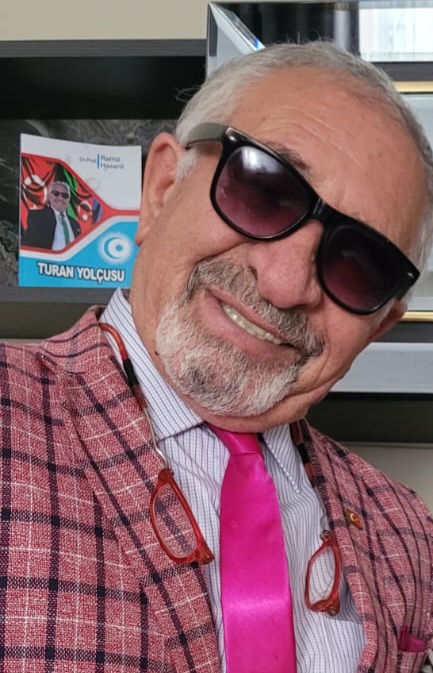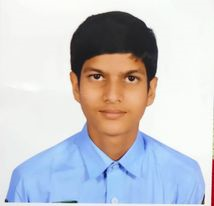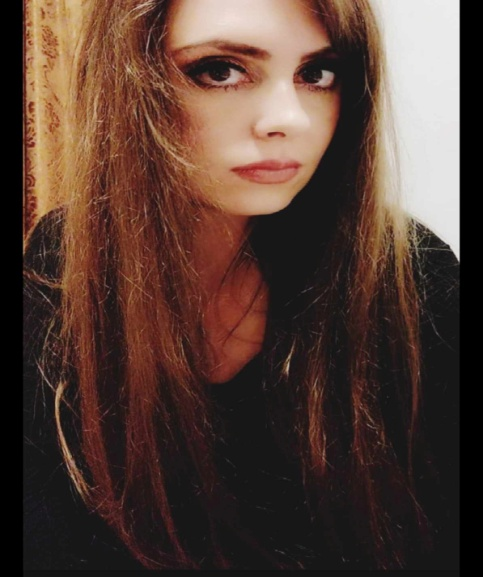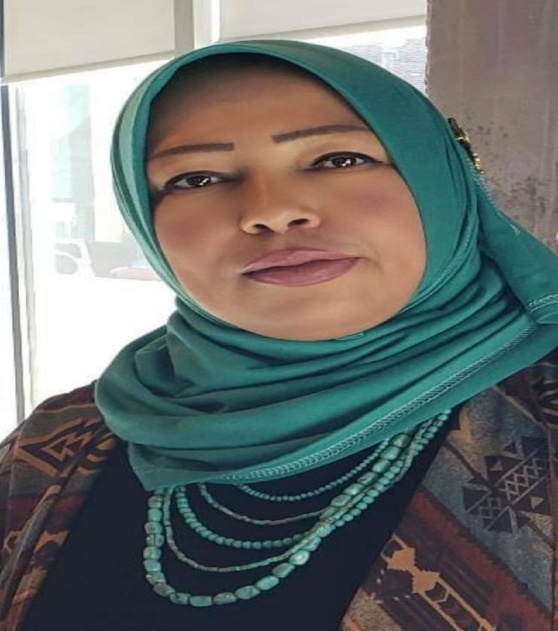the sun has come out one crow flies across the lot & then another — on the 38 one block from Jack’s Lawson Park sidewalks lined with tents — ol’ crow got sum’n he takes it up to the roof of the bus station — the year’s shortest day the mailman knocks on my door & postage is due — without a coffee I walk back from Circle K crow caws out hello! — bio/graf J. D. Nelson’s poems have appeared in many publications, worldwide, since 2002. He is the author of ten print chapbooks and e-books of poetry, including *Cinderella City* (The Red Ceilings Press, 2012). Nelson’s first full-length collection is *in ghostly onehead* (Post-Asemic Press, 2022). Visit his website, MadVerse.com, for more information and links to his published work. His haiku blog is at JDNelson.net. Nelson lives in Boulder, Colorado, USA.
Poetry from J.T. Whitehead
The Vanities * In God We Trust. – the Mint. * One Nation, Under God. – the ribbon sticker on the car. * God, Guns & Guts Made America Great. Let’s Keep it that Way. – the bumper sticker on the car. * God Damn me if this Defendant’s third victim isn’t my weekend. – the Deputy Attorney General. * We thank God for our great victory today. – the football coach. * We thank God for our great victory today. – the terrorist. * We thank God for our great victory today. – the Executive of the mortal nation. A very short poem about Rubber Tree Plants and the division of labor What in the World would make any one black ant think that it knows more about Earth than another black ant, moving a similar amount of Earth, just because of the specific kind of Earth – for example, a rubber tree plant – that it moves? Its own self? A song? Something it heard? Read? * Now . . . let us consider the red ants . . . The Viennese Renaissance Max was driving to work. He had recently finished a collection of poetry by Georg Trakl. After finishing graduate school, years ago, he read at least half a dozen books by Sigmund Freud. While in graduate school, he studied Wittgenstein, and the logicians of the Vienna Circle. When Max was an undergraduate, his “Cultures and Traditions” course included a component on the Viennese Renaissance. Max had also, in just the last week, finished a book of paintings by the artist, Egon Schiele. And the satellite radio station was playing a work by Schoenberg, to be followed by either Webern or Berg. Stars were aligned in his mind. So Max thought about Vienna, and its wild and weird Renaissance. The Viennese Renaissance is the strangest, and most bizarre, renaissance, in the history of the West and all of its rebirths, Max thought. It consisted of a uniquely sordid, twisted, and literally incestuous cast of cultural figures. That, and some really dull, logical thinkers. At a time when Freud was writing about sons and daughters wanting to have sex with their mothers and fathers, making that his paradigmatic framework, the painter Egon Schiele and his younger sister were checking into an inn and selecting the same room their parents shared on their honeymoon. Trakl was also fucking his own sister. They were, apparently, in love. Unsupervised children on a large estate, complete with carriage houses. Wittgenstein, meanwhile, was probably frequenting the docks and dives where someone might humiliate him, anally or painfully, or both, sad and lonely man. What he could not speak about, he passed over in silence. None of this activity, mental or otherwise, was atonal. It had a tone, its own strange tone. Which sounded . . . off. Max sighed. Max shook his head. Max admitted to himself, as he passed tow trucks and police commissions on the side of the road, 65 South, following a terrible accident, one that probably included fatalities, that this one thing resembled the other. The sight of the accident led to a most logical conclusion, after Max had empirically gathered his data: “One shouldn’t study the Viennese Renaissance too closely,” he said out loud to himself, passing the carnage. “One should only look it over briefly, quickly . . . like the sight of this wreck . . . and pass it by slowly. Or risk distraction. And further damage.” When Thorsten Veblen met your Grandpa Some would have called it old-fashioned – These signs of a pride that knows no end. He would cut the grass, almost daring the dirt, True to his class in his best white shirt. As if every day was a chance to say – To the World at large – “I don’t have to charge. I pay outright. I own my day. And also, I own the night. I own your work and I own my play. My Capital never has to shirk. So look at me – neighbor – What do you see? I am the member of your bourgeoisie.” You put me in a beautiful dizzy So I think today I will address the birds the way I might address a letter to you in hopes of a return . . . how they always fall in circles through their sky singing somber psalms unwritten by tempted mortal us. I will address their angelic comportment, their holy apathy, their tempestuous singing at our morning window as I fall in circles in you . . . or maybe hearing them I will remain silent unlike them, but for their beautiful dizzying spirals & flight as I alight . . . J.T. Whitehead earned a law degree from Indiana University, Bloomington. He received a Master’s degree in Philosophy from Purdue, where he studied Existentialism, social and political philosophy, and Eastern Philosophy. He spent time between, during, and after schools on a grounds crew, as a pub cook, a writing tutor, a teacher’s assistant, a delivery man, a book shop clerk, and a liquor store clerk, inspiring four years as a labor lawyer on the workers’ side. Whitehead was Editor in Chief of So It Goes: The Literary Journal of the Kurt Vonnegut Memorial Library, briefly, for issues 1, 2, 3, 4, and 6. He is a Pushcart Prize-nominated short story author, a Pushcart Prize-nominated poet, and was winner of the Margaret Randall Poetry Prize in 2015 (published in Mas Tequila Review). Whitehead has published over 333 poems in over 125 literary journals, including The Lilliput Review, Slipstream, Left Curve, The Broadkill Review, Home Planet News, The Iconoclast, Poetry Hotel, Book XI, Gargoyle, and The New York Quarterly. His book The Table of the Elements was nominated for the National Book Award in 2015. Whitehead lives in Indianapolis with his two sons, Daniel and Joseph, where he practices law by day and poetry by night.
Essay from Yahya Azeroglu

ANARKEN FROM A BENGLADESH POET!!! Famous Bangladeshi poet-writer Abubakar Siddique passed away on 28/12/2023 at the age of 89. The poet, who devoted most of his life to culture, arts and literature, published many works, but was never at the forefront because he was modest and modest. However, we, the world of literature and art, knew that the works he wrote were the enlighteners of the dark world, but unfortunately, this genius person passed away at the medical faculty hospital in the city of Khulna, Bangladesh, at dawn on 28/12/2023, thus a turbulent and successful life ended. His loved ones, including me, and the people of Bangladesh were very saddened by his death, but unfortunately, the reality called death cannot be prevented. When we think about it in this context, we cannot help but say, "May God grant him a beautiful death in his death." As one of our poets said, "death is a beautiful thing, it is the news behind the curtain, if it were not beautiful at all, would the prophet have died?" None of the people who were born approximately four billion years old have lived forever. Therefore, although I see the famous Bangladeshi poet Abubakar Siddique as one of those world changers, I think that we will witness the immortality of the poet Abubakar Siddique by being remembered with his works that are beneficial to people in this world, the life of this great literary master Abubakar Siddique. He spent his last years at his younger sister's house in the city of Khulna. The poet Abubakar Siddique, who was born like a sun in Gotapara village of Nanabari city in August 1934, contributed to Bangladeshi Literature by publishing his first poetry book "Dhabhal Dudher swargram" in 1969. We can list the works he wrote later as follows: Works such as Binidra Kale Vale"1976"Oloksabhyata"1984-"Hemanter Sonalata" 1995-"Manush Tomar Bikshat Din" 1986- are among his many published works, and we also see dozens of story books of the late poet among these works. Of course, people are born and die at an unknowable moment. Deaths reveal very important differences between people, some people are just born and die after a while, but some people are born, they just change the world, but they are remembered with the works they left in the world and live in hearts, just like the Bengladesh poet Abubakar Siddique we mentioned. Of course, the Turkish poet Yahya Kemal As Beyatlı said in his poem "THE SILENT SHIP", if it is time to set anchor, a ship sailing from time to the unknown departs from this port. It sails silently, as if it had no passengers; Neither a handkerchief nor an arm is waved in that departure. Those who remain at the dock are saddened by this journey, To the black horizon for days. He looks at you with moist eyes, helpless hearts! This is not the last ship to leave! This is not the last mourning of the long life. The one who has been loved in the world and the one who loves waits in vain; He does not know that the departed lovers will not return. Each of the many departed is happy, Many years have passed; Yes, as Yahya Kemal Beyatlı said, those who left this world will definitely never come back, but I think that if those who left this world left a work in their lives, it will live in the hearts of the people who read his works, just like the late Bangladeshi poet Abubakar Siddique, I remember him with mercy and gratitude. .. Yahya Azeroğlu is the chairman of the Turkish World Art and Culture Center.ŞAİRİN ÖZGEÇMİŞİ CURRICULUM VITAE OF POET AND AUTHOR YAHYA AZEROĞLU Yahya Azeroğlu, who was born in 1955 in Yukarı Topraklı village of Iğdır Ayrılık District, completed his education in Iğdır. Then he went to Germany. He took foreign language lessons (German) here for 2 years. He resided in various countries in Europe. He returned to Turkey in 1983. While Azeroğlu continued his cultural activities in Turkey and continued writing poems and articles, he was accepted to Eskişehir Anadolu University’s Department of Public Administration. Afterwards, he founded the Iğdır Poets and Writers Association in 1994. And he served as its President for 15 years. Azeroğlu, who is a member of the Professional Association of Scientific and Literary Works of Turkey, has published 7 books, including “CHIRPINIŞ”, “SILENT SCREAMS”, “Take an example from ATATURK”, TAKE UNDER THE FLAG”, THE EPIC VILLAGE IN THE AARAS VALLEY, “CYPRIAN WRITER HASAN ÇAKMAK”. He has published 7 books in Europe. He was invited to many conferences held in Antalya. His poems received first prizes in many poetry competitions he participated in. Due to his successes, he became the subject of news in the famous BILD newspaper published in Germany. Poet-researcher Writer Yahya Azeroğlu was awarded the poet of the year award in Antalya in 2020. In addition, Azerbaijani scientist prof. .dr. Ramiz Hesemli wrote a book called “Turan Yolcusu” about the poet writer Yahya Azeroğlu, the second book written about Yahya Azeroğlu was written by the poet-writer Banu Həsən Qızı Musayeva, and “On philology by the Azerbaijan science and education center” (F) Professor diploma was awarded. Yahya Azeroğlu currently resides in Antalya, Turkey. Prof. Dr (F) Yahya Azeroğlu Turkey BENGLADEŞLİ BİR MERHUM ŞAİRİ ANARKEN!!! Bengladeşli ünlü şair- yazar Abubakar Siddique 28/12/2023/Tarihi itibariyle 89 yaşında vefat etti ömrünün büyük bölümünü kültür sanat ve edebiyata adayan şair çok sayıda eserler yayımlanmasını rağmen mütevazi ve çok alçakgönüllü olmasından dolayı hiçbir zaman kendisi ön planda olmadı halbuki bizler yani edebiyat ve Sanat dünyası biliyorduki onun yazdığı eserler karanlık dünyanın aydılatıcısıydı ama ne yazıkki bu dahi insan 28/12/2023/Tarihinde bir şafak vaktinde Bengladeşin Khulna şehrindeki tip fakültesi hastahanesinde hayata gözlerini kapadı çalkantılı ve başarılarla dolu bir ömür böylece son bulmuş oldu, onun ölümüne bende dahil olmak üzere sevenleri ve Bengladeşliler çok üzüldüler ama malesef ölüm denen gerçeğin önüne geçilmiyor, bu çerçevede düşündüğümüzde Tanrım Ölümünde güzelini nasip etsin demektende kendimizi alamıyoruz zira bir şairimizin dediği gibi "ölüm güzel şey budur perde ardından haber, Hiç güzel olmasaydı ölürmüydü peygamber" Takriben 4 milyar yaşında olan dünyaya gelenlerin hiç birisi ebediyete kadar yaşamamıştır. Dolayısıyla Bengladeşli ünlü şair Abubakar Siddique de o dünya değiştirenlerden birisi olarak görmekle beraber şair Abubakar Siddique bu dünyada insanlara faydalı eserleriyle anılarak onun ölümsüzlüğüne şahit olacağız diye düşünüyorum,bu büyük Edebiyat ustası Abubakar Siddique ömrünün son çağlarında Khulna şehrindeki küçük kızkardeşinin evinde geçirdi, 1934 yılının Ağustos ayında Nanabari şehrinin Gotapara köyünde bir güneş misali doğan şair Abubakar Siddique 1969 yılında ilk şiir kitabı olan "Dhabhal Dudher swargram" adlı kitabını yayımlayarak Bengladeşl Edebiyatına katkıda bulundu daha sonraları yazdığı eserleri şöyle sıralayabiliriz, "Binidra Kale Vale"1976 "Oloksabhyata"1984- "Hemanter Sonalata" 1995 "Manush Tomar Bikshat Din" 1986- Gibi eserler yayınlanan çok sayıdaki eserleri arasındadır ayrıca merhum şairin onlarca öykü kitabınıda bu eserlerinin arasında görüyoruz Tabiki insanlar doğarlar ve bilinmesi mümkün olmayan bir andada ölürler bu ölümler insanlar arasında oldukça önemli farklılıklar ortaya koymaktadır yan bazı insanlar sadece doğarlar ve bir süre sonrada ölürler lakin bazı insanlar ise doğarlar sadece dünya değiştirirler ama onların dünyada bıraktıkları eserleriyle anılırlar ve yüreklerde yaşarlar tıpkı söz konusu ettiğimiz Bengladeşli şair Abubakar Siddique gibi.tabiki Türk şairi Yahya Kemal Beyatlının "SESSİZ GEMİ" adlı Şiirinde dediği gibi Artık demir almak günü gelmişse zamandan Meçhule giden bir gemi kalkar bu limandan. Hiç yolcusu yokmuş gibi sessizce alır yol; Sallanmaz o kalkışta ne mendil, ne de bir kol. Rıhtımda kalanlar bu seyahatten elemli, Günlerce siyah ufka bakar gözleri nemli, Biçare gönüller! Ne giden son gemidir bu! Hicranlı hayatın ne de son matemidir bu. Dünyada sevilmiş ve seven nafile bekler; Bilmez ki giden sevgililer dönmeyecekler. Bir çok gidenin her biri memnun ki yerinden, Bir çok seneler geçti; dönen yok seferinden. Evet Yahya Kemal Beyatlının da dediği gibi bu dünyayı bırakıp gidenler kesin olarak birdaha geri gelmeyecekler lakin bu dünyayı terkedipte gidenler yaşadığı hayatta eğer bir eser bırakmışsa onun eserlerini okuyan insanların yüreklerinde yaşayacaktır diye düşünüyorum tıpkı Bengladeşli merhum şair Abubakar Siddique gibi onu rahmetle minnetle anıyorum... Yahya Azeroğlu Türk dünyası sanat kültür merkezi genel başkanı.
Poetry from John Grey
FROM THE HEART OF A HOARDER Stuff overflows the house – to the disinterest onlooker, it is the house – you may be able to live with the barest minimum of items – but I'm committed to purchases, storing objects in previous empty places - you are looking at a lifetime – you can't say that in your house – come inside, if you can find the space – I will point to you the boy, the man I am now, and everything in between – wherever I live, a museum wraps around me like a cloak – every book, every toy, every photograph, every piece of music - I can show you my life history in nothing but spoons – my most cherished secrets in a filing cabinet – interested in the real me? come along - a sated closet awaits – I was married once – "it's either all this crap or me," she said – take a good look - you'll find report cards, bank statements, comics, newspapers, razor blades, ceramic horses, tin soldiers, baseball cards, but ultimatums – nada. TO MAKE THIS WORK I have no wings, no gills – can’t fly, can’t live under water. But I can occupy a parlor chair, put my feet up on an ottoman, drink beer, munch chips, and stare at football games on a flat-screen television. You’d be surprised at what can constitute a pet. THE DAY BY ROTE The day glows yellow in the clock radio face. The day puts the kettle on for coffee. The day shaves the lower half of my face. The day dresses me in what won’t embarrass either of us in the brightest of its light. The day exits the house, gripping my hand. The day starts the car. I grip the wheel but the day is in the driver’s seat. WHY I SAID “NO” There’s no such thing as an innocent family picnic. The food aims right for my craw. The alcohol comes on like a compress. Open the old hurts. Cut through the insincere smiles. It takes more than courage to take the hand of brothers. To eat with them To sit between those great boulders and not call them bastards. You urge me to set aside my differences for the afternoon. Sure, like green, given the occasion, can convince itself that it’s really orange. It’s okay for you. You’re only a family member courtesy of the diamond on your finger. My brothers and I drown in the same blood. In my dream, I crash the event in my car. In one great sweep, down goes the grill, the hotdogs, the glowing coals, the ash. No my dear, pretending I’m someone else won’t wash. Won’t wash the words. Won’t wash the deed. And if you think there’ll be some kneeling involved, a little begging for forgiveness, you’ve been watching the wrong drama. The wounds cut deep. The blades are still in me, still jiggling about, in search of a more tender spot. There’s no shared memories to flutter a cooling breeze. No ray of sunlight in a web of darkness. No natural bond that will pull us all into line. Just baggage. Just pain. For me, one family ends here. Only you and I can have a future. EMMA REMEMBERS THE MAN OF THE HOUSE He was Seagram 7 man. He was Budweiser man. Much of her childhood was the stink of his breath. But she loved him - even when he drove that Chrysler like a crazed demon, with her bouncing in the backseat; even when his slippery grip once dropped her to the floor. And he was rough hands man. He was chest scar man. Much of her childhood was him up on a roof somewhere, in searing sun, hammering in tiles or repairing chimneys. High atop a house, he was a god. Then after work, straight to the bar, he would stumble home as the devil. He was holy man. He was nasty man. But she loved him – when he tore her heart out, it refused to tear. John Grey is an Australian poet, US resident, recently published in New World Writing, California Quarterly and Lost Pilots. Latest books, ”Between Two Fires”, “Covert” and “Memory Outside The Head” are available through Amazon. Work upcoming in Isotrope Literary Journal, Seventh Quarry, La Presa and Doubly Mad.
Poetry from Wazed Abdullah

Friends Friends are like stars in the night sky, Together we laugh, together we cry. In happy moments, they stand close, In tough times like a comforting dose. Sharing special moments, making memories dear, Through each smile and every tear. Side by side, through thick and thin, Friends forever, a bond that'll always win. (This poetry has been dedicated to all of my friends.) Wazed Abdullah is a student of grade 8 in Harimohan Government High School, Chapainawabganj, Bangladesh.
Poetry from Azemina Krehic

ADJUSTMENT TO THE DARK Accustomed, we no longer stagger, And we don't hold our hands in front of us trying to feel the shapes. We are already walking confidently through the darkness, along the roads which seem to have always been ours, and on which we know each one crease, salience and direction. Darkness can now be touched. We grab it; darkness is a loose earth, humus and it rushes through our fingers Azemina Krehić was born on October 14, 1992 in Metković, Republic of Croatia. Winner of several international awards for poetry, including: Award of university professors in Trieste, 2019.,„Mak Dizdar“ award, 2020. Award of the Publishing Foundation of the Federation of Bosnia and Herzegovina, 2021. „Fra Martin Nedić“ Award, 2022. She is represented in several international anthologies of poetry.
Poetry from Faleeha Hassan

Not Maryam Father, I am not Maryam. Not Maryam. Despite that The one you see Utter between you, I am not his mother And he is not borne from me Yet the one called Jesus belongs to me. … I am not Maryam, father Not Maryam. I buy my bread with my own tears Every time You don’t feed me. Your sky is grapes And I have not a prophet’s uncle and My mother didn’t sell me For the Qibla* of her prayers. Why then do I see the deaf And blind Fight me at my doorstep? … Not Maryam, father. I am not Maryam. I was not a sister to Harun * My hands are my witnesses They tire of shaking the root of your palms And I did not dream of flour falling into my hands The drink I brought Is tasteful only to myself. What’s with these horses Bleeding and whining At my sight? … I am not Maryam, father. I am not her. Your women seek me for the onset of labour. And this face Its features moulded by the palm of the wind is ruined by exile. For the first dawn I do not rise to deceit, I am not hanged - and have no fear. I am not Maryam, father I am not Maryam. But I present myself As a temple Lest you claim that I am Maryam. ………………….. * Qibla: the direction that a Muslim faces when performing their daily prayers. * Harun: (Harun Al Rashid 766-809) His date of birth is debatable. The Thousand and One Nights tales were based on him and his imagination. By Faleeha Hassan Translated by Dikra Ridha She is a poet, teacher, editor, writer, and playwright born in Najaf, Iraq, in 1967, who now lives in the United States. Faleeha was the first woman to write poetry for children in Iraq. She received her master's degree in Arabic literature, and has now published 26 books, her poems have been translated into English, Turkmen, Bosnian, Indian, French, Italian, German, Kurdish, Spain, Korean, Greek, Serbia, Albanian, Pakistani, Romanian, Malayalam, Chinese, ODIA, Nepali and Macedonian language. She is the Pulitzer Prize Nomination 2018, PushCart Prize Nomination 2019. Member of International Writers and Artists Association. Winner of the Women of Excellence Inspiration award from SJ magazine 2020, Winner of the Grand Jury Award (the Sahitto International Award for Literature 2021) One of the Women of Excellence selection committees 2023 Winner of women the arts award 2023 Member of Whos’ Who in America 2023 SAHITTO AWARD, JUDGING PANEL 2023 Cultural Ambassador - Iraq, USA Email : d.fh88@yahoo.com
